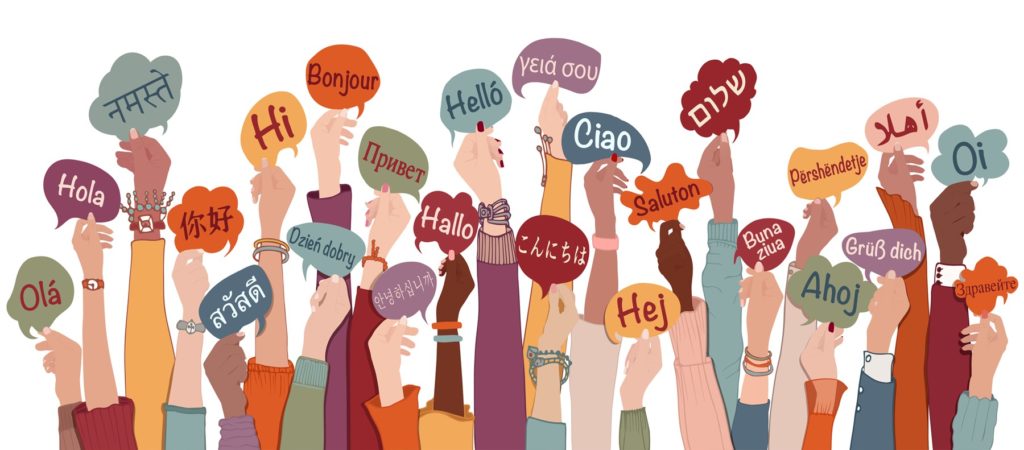
3 Reasons You Need Subject Matter Specialists to Translate HR Content
Articles
・9 min read
You’ve created a stellar content marketing campaign in one local language. As part of your global marketing strategy, you need to get your message across to your audiences in different locales. So, what’s the best way to do that?
The most straightforward way may be to translate or even transcreate your content into various target languages. But is that the right and most effective way?
According to Nataly Kelly, VP of Localization at HubSpot, there is a growing trend of companies using a hybrid approach of creating native content as well as translating and transcreating.
“We have been doing native content in multiple languages for quite a number of years at HubSpot. One of the goals and the drivers is really, you know, the traffic. If you have an SEO-driven strategy and you have a digital marketing playbook, you most likely care about attracting high-quality traffic to your site. And so, if you’re going to do that, it’s very hard to do that with localized content alone.”
Nataly Kelly, VP of Localization, HubSpot
And it makes sense. If your marketing strategy includes an English blog, it likely means your posts have been optimized for specific keywords in English. Localizing these posts into different languages could mean less effective or obsolete SEO. Often, the keywords in different languages and locales differ, so an English blog post with SEO rankings in the top 10 may drop down to the 500th place in other languages when translated or localized. So, while your translated posts may be driving some traffic, it wouldn’t be for the most important keywords in your market for that locale.
This reason alone is a significant trigger to create local content for the most important locations of your global marketing efforts.

If your aim is to hit the top 10 keywords on a given subject for your target audience, you may find that when you do the research, those top 10 keywords have nothing to do with the top 10 in English for your US market or your UK market.
It may even be faster and cheaper to create native content than to retrofit your English posts to match new keywords researched in other languages.
Creating native content is even more necessary when it comes to multimedia because video content can be difficult to localize, especially when it requires people on camera speaking the native language.
Previously your localization efforts might have included paying someone to translate and then hiring an on-camera talent to appear, but when you produce a high-volume of content at scale, it’s better to go down the path of native content.
Regardless of the type of content, blogs, images, articles or videos, themes vary from country to country so native content ends up being your best bet for maximum resonance with your audience at the end of the day.

Now we’re not saying creating native content is always the best choice. Some content is universal and can be easily localized, like with product marketing. Most times you won’t have to adapt a great deal of it unless there are functionality gaps from market to market. Sometimes it’s a matter of finding the perfect balance between localized content and native content, but it boils down to what the limits on your localization efforts are (time, resources, etc.).
The expert weighs in.
“It’s always hard to measure. I mean, this is something I always try to do. Find out if copy really makes a difference. We sometimes do a testing so we can find out which wordings were better, but it’s hard to test copywritten versus localized copy because you never know why something performs better or not so well.”
Felicitas Kermarrec, Head of Copywriting and Translation, Spread Group
The bottom line is that there could be a number of factors that influence whether a page is going to convert at a high rate or not. It’s difficult to say if it’s because it’s native or because it’s localized.
For example, a post created for the US market can be written by a native speaker for the Japanese market and rank quite high, but the traffic could be due to the author attached to the post, or the Instagram account it’s posted from and nothing else. So, who’s really to say? There are many reasons one post can outperform another and sometimes it has nothing to do with the content.
For these strategies, the type of content you push makes a difference. Let’s say you want to intensify your efforts in a given market. It’s probably better to have a higher volume of native content vs localized content. You need more than a simple native content strategy. You need to establish a native brand presence. And to successfully achieve this, it pays to commission copywriters or influencers who understand the market and might even be better at suggesting topics they believe will resonate with local audiences as opposed to a translator who will be constrained to what you provide them.
In fact, it’s a growing trend for companies to hire copywriters that have either journalistic backgrounds or are deeply in-tune with not only the local brands and how to market them, but also the current affairs and events associated with similar brands and business areas.
When it really comes down to it, your international marketing efforts require a robust and diverse skillset and about four different people or talents to achieve the desired outcome.
“You need a local marketer who can manage everything and decide what pieces are going to be sent to which type of vendor. You need an SEO strategist who can determine which keywords are the most important for that market. A freelance writer (or several) to write using those keywords and link them to the right sources. And you also need a translation team because there might be times when you need certain portions or entire posts translated.”
Nataly Kelly, VP of Localization, HubSpot

The takeaway? There is no right way to mix copywriting and localization. The goal of your copywriting and localization efforts should be to ensure the maintenance of a global tone of voice while giving your copywriters and marketers that local creativity.
Want to optimize your international SEO strategy or require specialized multilingual copywriting services? Our Creative Content services have helped companies across various industries strengthen their brand voice in locales around the globe. We would love to help you do the same.
What to read next...
Want to know more?
The latest industry news, interviews, technologies, and resources.
View all resourcesGet in touch
We are committed to giving you freedom of choice while providing subject matter expertise and customized strategies to fit your business needs.
Contact us